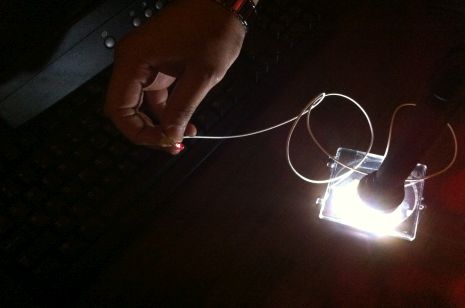Researchers at the University of Arkansas achieved a higher solar cell efficiency — the highest ever in a 9 millimeter-squared solar cell made of gallium arsenide.
A conversion efficiency of 14% was also recorded after coating the cufflink-sized cells with a thin layer of zinc oxide.
A small array of these cells — as few as nine to 12 — generate enough energy for small light-emitting diodes and other devices.
But surface modification can be scaled up, and the cells can be packaged in large arrays of panels to power large devices such as homes, satellites, or even spacecraft.
In the above image, Yahia Makableh, doctoral student in electrical engineering demonstrates how a small array of 9-millimeter, gallium-arsenide solar cells can provide energy for small devices.
“We want to increase the efficiency of small cells,” said Yahia Makableh. “With this specific material, the theoretical maximum is 33 percent efficiency, so we have some work to do. But we’re making progress. The beauty of zinc oxide is that it’s cheap, non-toxic and easy to synthesize.”











Comments